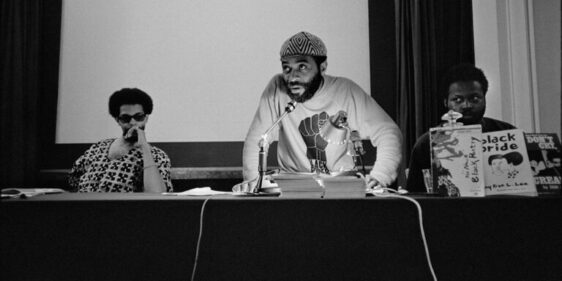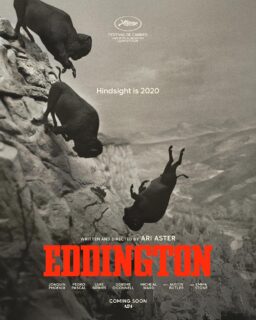Sid Grauman’s Egyptian Theatre would seem to be both the right and wrong place for the AFI Fest screening of Michael Moore’s new documentary, “Where to Invade Next.” (Moore admitted, “I once had a date in this theater.”) The Egyptian Theatre was the venue for the first Hollywood premiere (Douglas Fairbanks in “Robin Hood“) in 1922. Its Egyptian Revival style reflects a period in time when movie theaters borrowed haphazardly from other cultures to construct internationally themed, individualistic architectural structures.
Before you could ponder what being on a date with the man who starred and directed “Roger & Me,” “Bowling for Columbine,” and “Fahrenheit 9/11” would be like, Moore continued his introduction, stating that this was a documentary he had “thought about making for a long time.” He called up some old friends who had worked with him on previous documentaries and, instead of getting a production office, the crew met at his own house to formulate plans for something “like a pop-up documentary.” Moore chose countries to “invade” where he can learn and claim innovations that the U.S. could use.
While “Where to Invade Next” was making its Los Angeles premiere at the AFI Fest gala, it had already made its world premiere at the Toronto International Film Festival (reviewed by Tina Hassannia and Susan Wloszczyna for RogerEbert.com). As Wolszczyna noted, this is a kinder, gentler Moore than the angry man of “Roger & Me.” In “Where to Invade Next,” Moore himself proclaims, “My mission is to pick the flowers, not the weeds.“
The flowers include the work and vacation laws in Italy where eight-weeks paid vacation are expected (plus five-months maternity leave), hour-long lunches for school cuisine in France that teach both table manners and an appreciation for food and diet, the educational systems in Germany, Slovenia and Finland, etc. The segment on Norwegian prison system will make you question the need for revenge and violence in this country. The status of women in Iceland and Tunisia are also subject to Moore’s invasions. As an art student, I was tickled to see the German company, Faber-Castell, which is based in Nuremberg and was featured for its 36-hour work week.
This is a documentary that doesn’t just look at problems, because as Moore noted after the screening, “You all already know what’s wrong. I want to see change in my lifetime. This is a no-problems, all solutions movie. This is all about the cure. Other countries have been doing these things for a long time.” Moore also confessed that because he is such a bad actor, while his team did the research and formulated questions, his reactions are genuine.
Moore’s new documentary “Where to Invade Next” asks if the U.S. citizens might profit from looking at the reality: The U.S. is not the greatest country. In “Where to Invade Next,” Moore suggests that with a dose of humility we can make our country better, by borrowing innovations, customs and attitudes from other countries, some of which might have originated in the U.S.
Moore said he believes in “the power of film.” He cited a film, “Selma,” that had screened last year during AFI Fest at the very same venue. He said it was “so inspiring” and confessed that he was deeply moved. Of the U.S. he said, “I believe we are better than this; I believe we can change.” Yet in order to do so, we need to “stop thinking of old America.” The old angry white men, he stated, “Their time is up.”
Although Moore feels that young Americans should all see this film, the documentary currently has an R-rating for violence, drug use and nudity. Moore is appealing that decision, stating that the clips about violence and drug use are from network TV news casts and the brief clip of full-frontal male and female nudity is “the most asexual nudity” ever on film.












